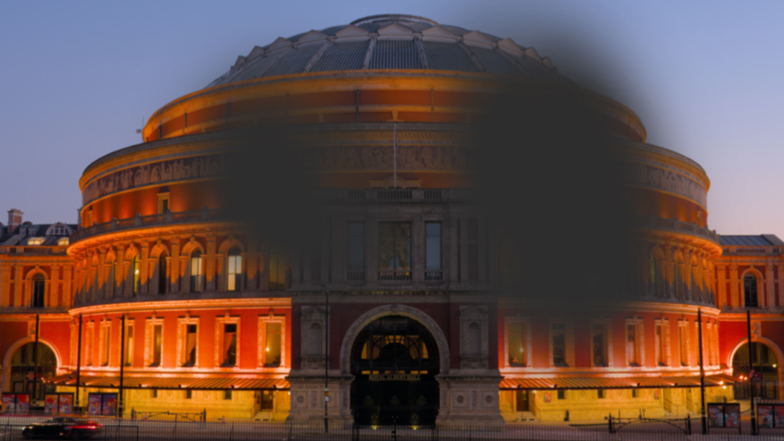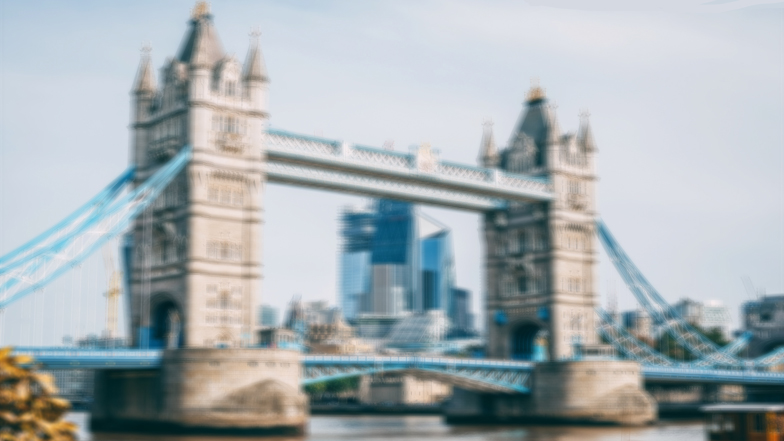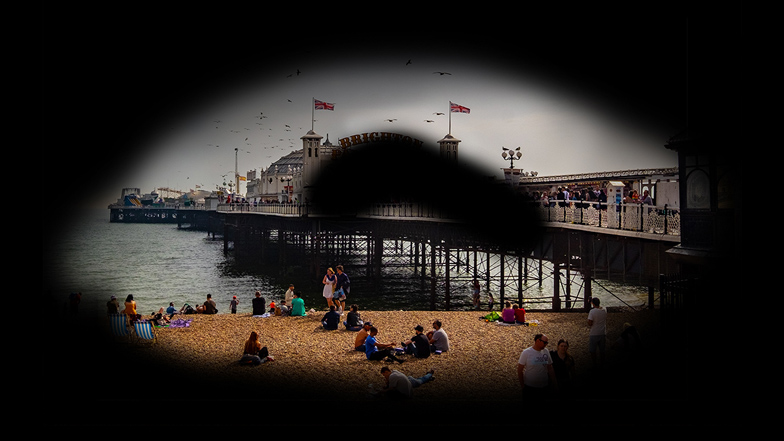UK landmarks and sight loss
There are a variety of serious eye conditions that millions of people in the UK suffer from on a day to day basis.
It can be difficult for people who don’t have an eye condition to imagine what the world is like for those who do.
To show how different eye conditions affect people with vision impairments, Guide Dogs has reimagined some of the most iconic places across some of the UK.
We have included the following conditions in our research:
Big Ben (London)
Named as the world’s most famous clock, Big Ben is one of the most iconic landmarks in the city of London. Built in 1843 as an addition to the Palace of Westminster and situated next to the River Thames, the attraction is a symbol of Britain widely known to the rest of the world. In the initial stages of a person developing cataracts, blurred vision begins to occur, making the world seem constantly out of focus. Tunnel Vision often means that an individual will lose much of their peripheral vision, resulting in this case in only being able to see a small part of the landmark at a time.








The Royal Albert Hall (London)
The Royal Albert Hall is one of the most famous concert halls in the world, hosting over 350 events each year and attracting visitors from across the globe. The orange glow of the venue may be familiar to many, however, it looks significantly different to those with deuteranopia, a form of colour blindness primarily affecting red, yellow and green hues. As a venue that primarily holds events in the evenings, those with night blindness are likely to have difficulty seeing the building in low-light conditions.








Tower Bridge (London)
Alongside being one of the most-visited landmarks globally, Tower Bridge is also used by an estimated 40,000 people commuting through London on a daily basis taking in the panoramic views. Macular degeneration affects the retina, which contains light-sensitive cells that allow you to see. People with this condition typically lose their central vision, along with the ability to see finer details.








Brighton Palace Pier (Brighton)
Brighton Palace Pier provides a day full of fun for groups visiting the coastal city, with an estimated average of over four million visitors annually. For those with glaucoma, one of the main symptoms is patchy blind spots developing in both eyes. As the impairment develops, people may find that their peripheral vision is also affected, resulting in small gaps of vision. In this instance, it would make it very challenging to see all of the 1,722ft long pier.








Stonehenge (Wiltshire)
One of the world’s most famous prehistoric monuments, Stonehenge was reportedly built in 2500 BC. For many, the site is only available to view from afar (unless a special tour has been requested), meaning that the best view you’re able to get when visiting is most likely similar to the picture above. Eye floaters are commonly described as spots in your vision that can take the form of specks, cobwebs or small transparent lines that continuously drift around in your eye-line, causing distracted viewing of focal points.








Roman Baths (Bath)
Comprised of four main features, the Roman Baths are hidden just beneath the city of Bath. During the first few decades of Roman Britain, a temple was built, and the baths have become a popular attraction for visitors of Somerset. For those with night blindness, the depth of this structure may cause more difficulty as there is a limited amount of light permitted to certain areas.








Living with varying degrees of sight loss can have a big effect on everyday life. We've put together information and tools that give you an insight into the effect of these eye conditions and how to live with them.
You can contact us to find out about our services and support tailored to your individual needs. Our guidance is for those living with visual impairments, whether you have some vision remaining or none at all.